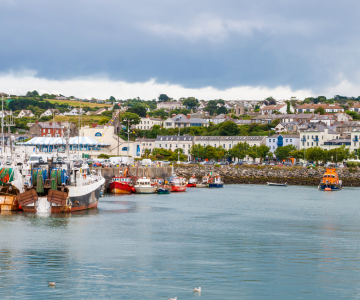
What’s On in Dublin - July
Summer is here, festival season is in full swing, and it’s the perfect time for a well-earned study break.
Evie Lucas
Many associate the spookiest night of the year with America’s all-out whimsy and wacky costumes. But did you know that Halloween traces its roots to ancient Britain and Ireland?
Over 2,000 years ago, people in what is now known as Ireland, Scotland, and Wales celebrated ‘Samhain’, a Celtic festival that marked the transition from the light to the dark half of the year. The night of October 31st was believed to exist outside of time itself, when the veil between the living and the dead was at its thinnest, leading to all kinds of frightening folk tales.
Every Samhain, families would prepare meals in silence - called ‘dumb suppers’, or ‘silent suppers’ - and build shrines for the ghosts of their ancestors. But not all visitors were welcome: people were also vulnerable to the whims of malevolent spirits. Many of our modern Halloween traditions come from the act of warding off these creatures, including feasting and bonfires, wearing costumes to scare away or blend in with spirits, and carving not pumpkins, but turnips, to protect the home.
In Ireland, the practice of trick-or-treating was known as ‘guising’. Although, back then, turning up at somebody’s doorstep in costume wasn’t quite enough. Instead, guisers would perform songs, poems, or tricks to earn their treats.
With Dublin’s Celtic origins, moody atmosphere, and connections to Count Dracula, Ireland’s capital is one of the best places to embrace your dark side. So, grab your carved turnips and don your scariest masks; here are 8 places to spend your Halloween in Dublin this October.

Tucked away behind Dublin’s Four Courts in Smithfield is an unassuming church with a secret. Walk through the church’s graveyard and you’ll see a set of imposing metal doors leading to a precarious stone stairway. Keep walking, all the way down, and you’ll find yourself in good company: down here are the mummified remains of the legendary Sheares brothers, who played a key part in the fight for Irish independence. You’ll also meet The Thief, The Crusader, The Nun, and The Unknown, some of whom are nearly 1,000 years old.
There’s nothing creepier than a cemetery at night, and Glasnevin Cemetery is no exception; Ireland’s national resting place is a shadowy labyrinth of stories told and retold, even appearing in James Joyce’s Irish Odyssey, Ulysses. This cemetery might have one of the most endearing ghost stories on this list: the tale of the Newfoundland dog. The story goes that in 1861, John McNeill Boyd, a sea captain, died during a great storm. Sadly, he left behind his dog, who was so loyal that he refused to leave his master’s headstone, eventually starving to death in the cemetery. Since then, many people claim to have seen the dog in Glasnevin, still sitting by his master’s side.
Take one of the cemetery’s guided tours, before stopping at the John Kavanagh pub nearby – aptly known as ‘The Gravedigger’s’ thanks to the gravediggers that used to stop by for a pint after work. Since its opening in 1833, The Gravediggers hasn’t changed much: there’s no WIFI and no flat screen TV to be seen; not even music, adding to the eeriness that makes this haunted pub unique. Oh, did we mention it’s haunted? Locals talk of a mysterious old man in a tweed suit who will wander in, drink a pint, then, presumably, return to the cemetery next door. Spooky.
Every year, at the end of October, Dublin’s most iconic locales are transformed into a Gothic celebration of all things Bram Stoker. In past years, this has included themed outdoor theatres, talks, tours, comedy nights, and even a banquet in a crypt – but don’t worry, you’ll find tastier things than blood on the menu.
If you’ve never heard of Bram Stoker, you’ve certainly heard of his legacy: Count Dracula, the world’s most famous vampire. Bram Stoker was born in Dublin in 1847 and studied at Trinity College. Dublin’s cobblestone alleyways, dust-covered crypts, and long history of storytelling was a source of endless inspiration for Stoker’s writing.
If you’re a vampire enthusiast or just a lover of the macabre, take a look at this year’s schedule.
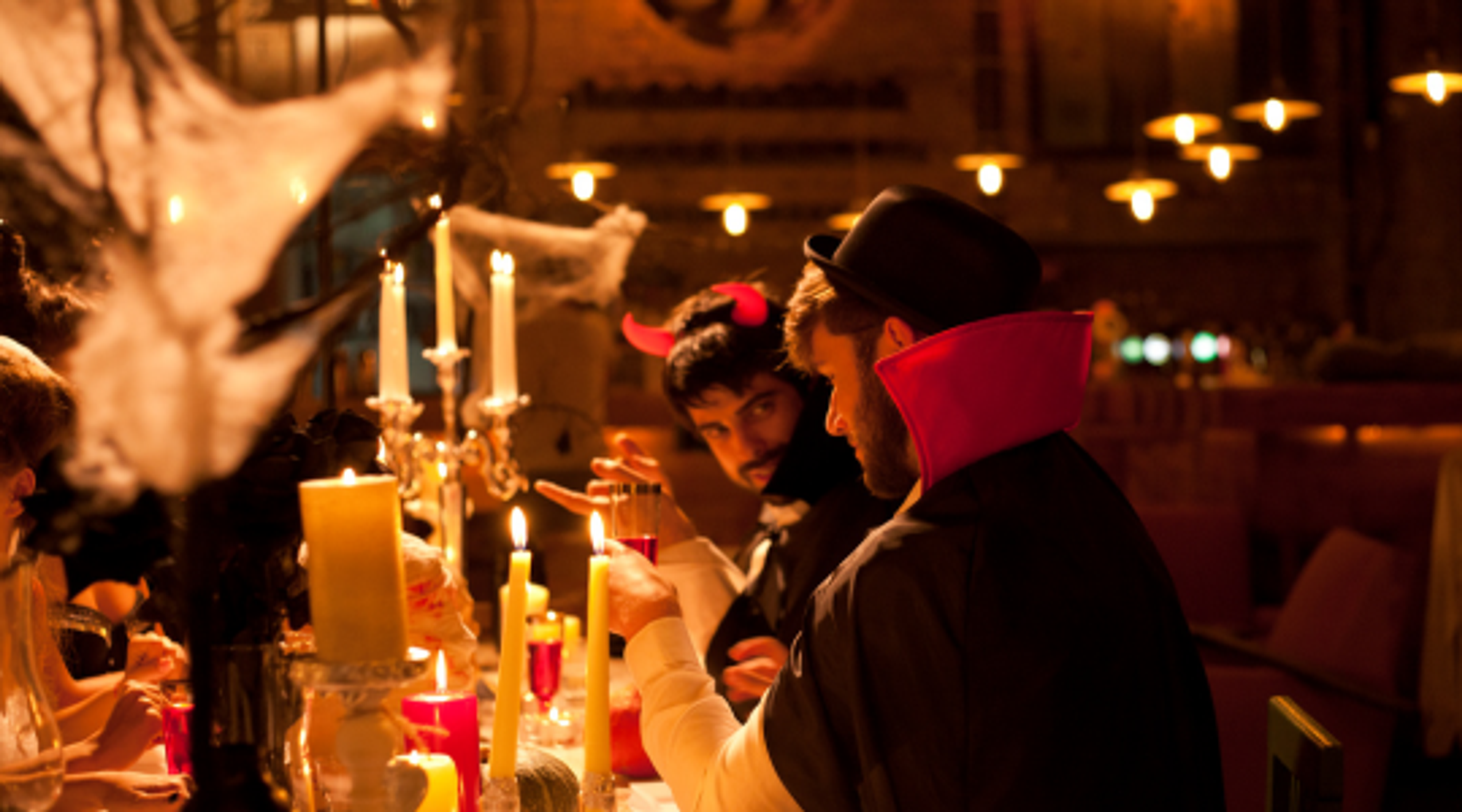
St Mary’s church was built in the 18th century and has seen over 320 years of history. While the building still stands, it’s no longer known as St Mary’s, but simply ‘The Church’, a historic bar and restaurant along one of Dublin’s busiest shopping streets. In Summer, the bar’s seating spills out into a terrace to tempt passers-by with colourful cocktails, but in Autumn, locals retreat inside for the dark wooden bar and moody atmosphere. The Church retains much of its original features, including a 282- year-old organ, baroque stained-glass windows, and the church’s burial crypts – although the actual remains were reinterred elsewhere.
If the setting weren’t already spooky enough, The Church sometimes hosts their own Halloween parties with special performances and a costume competition, so keep an eye out!
Atop Montpelier Hill, in Dublin’s mountains, lie the remains of a hunting lodge with a grisly past. Originally just a cairn (a pile of stones with religious or memorial purposes), the land was bought by William Conolly, an influential Irish politician and landowner, using the cairn to build his fireplace. The story goes that the disturbance of the cairn unleashed a curse on Conolly, and soon after construction the lodge’s roof was destroyed by a particularly powerful storm.
But what’s the hellfire club got to do with it? Well, the Hellfire club refers to a group of exclusive social clubs in 18th-century Britain and Ireland, notorious for decadence, drinking, and notably – black magic. After Conolly’s death, the lodge was taken over by the Irish Hellfire Club, inspiring some sinister rumours to spread. Many people knew the Irish Hellfire Club as Satanists; the president dressed up as Satan and held sacrifices of cats – and servants – in the hunting lodge. In one legend, the devil himself appears for a game of cards before disappearing up the chimney. Today it’s considered by many as one of the most haunted places in Ireland.
We’ve all heard the legend of forbidden knowledge gained at great personal cost. Knowledge is powerful, but it’s also dangerous. The Book of Kells, a medieval manuscript located deep within Trinity College’s Old Library, is no exception: folk tales abound with tales of unlucky readers who delved too deeply into the book’s secrets and were driven mad by curses and spirits.
Nobody really knows where the book of Kells was made, but most experts believe it to be crafted by monastic scribes in around 800 AD. The manuscript is a beautiful example of early medieval art and is famous for its meticulous detail. In fact, some of the illuminations (illustrations accompanying the text) are so unique that experts have suggested the monks who created these works might have had a little help from some... special... kinds of mushrooms.
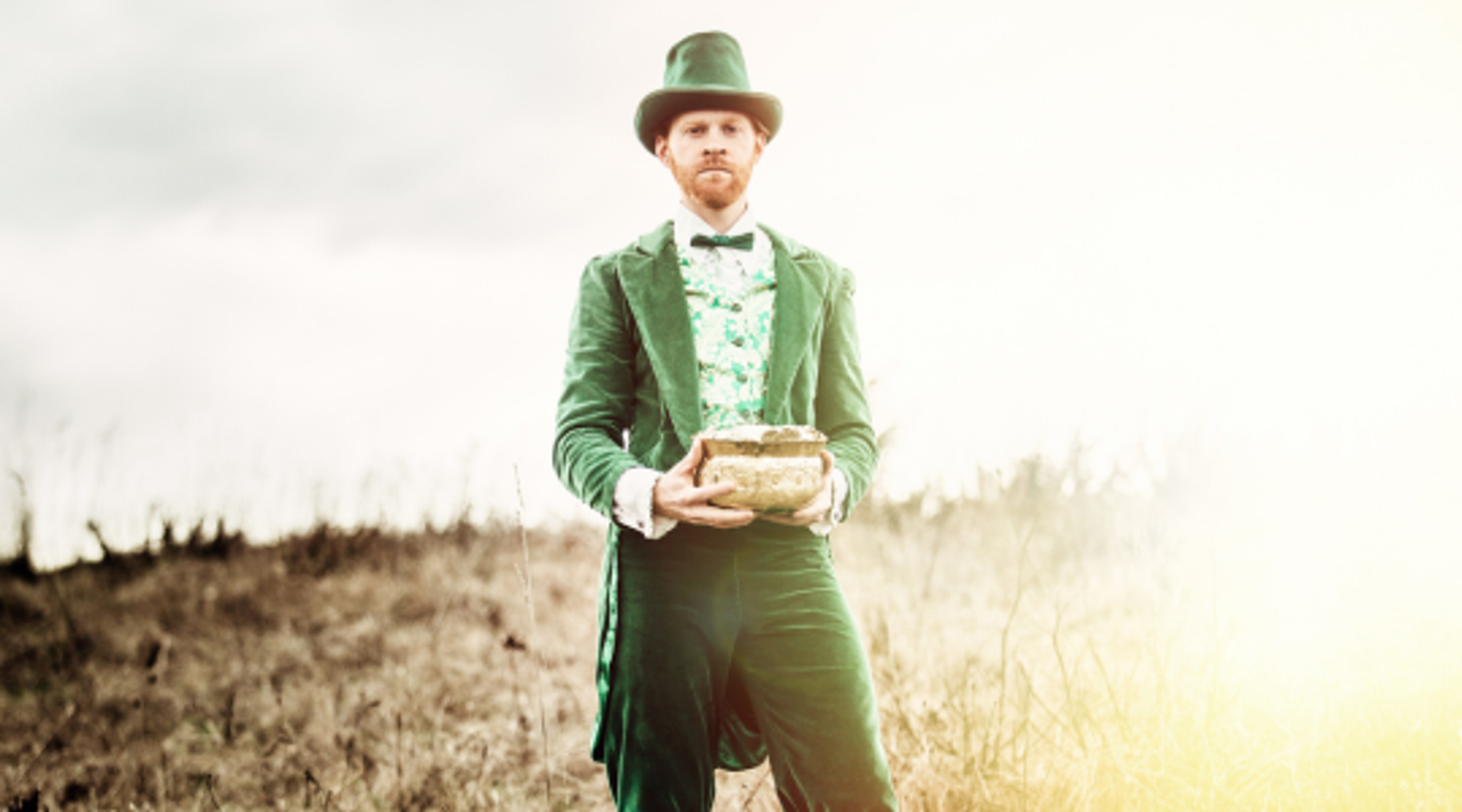
Dublin’s National Leprechaun Museum might sound like light-hearted fun, but visit after dark and you’ll have a whole different experience. The museum’s Dark Land tour takes visitors on a journey through ‘tales of death and violence’, ‘bloody kings and eerie fairies’. While the tour covers a variety of Irish folklore, you’ll learn that leprechauns themselves are more than cheerful, mischievous figures: long ago, leprechauns were also associated with death and the underworld, acting as omens of death or even leading souls to the afterlife.
In one tale, Seàn na Scuab, a poor man, captures a leprechaun and forces him to reveal the location of a hidden treasure. The man digs up the gold at night, but as he touches the last coin, the treasure turns to dust, and the oak tree’s roots pull him into the earth, never to be seen again.
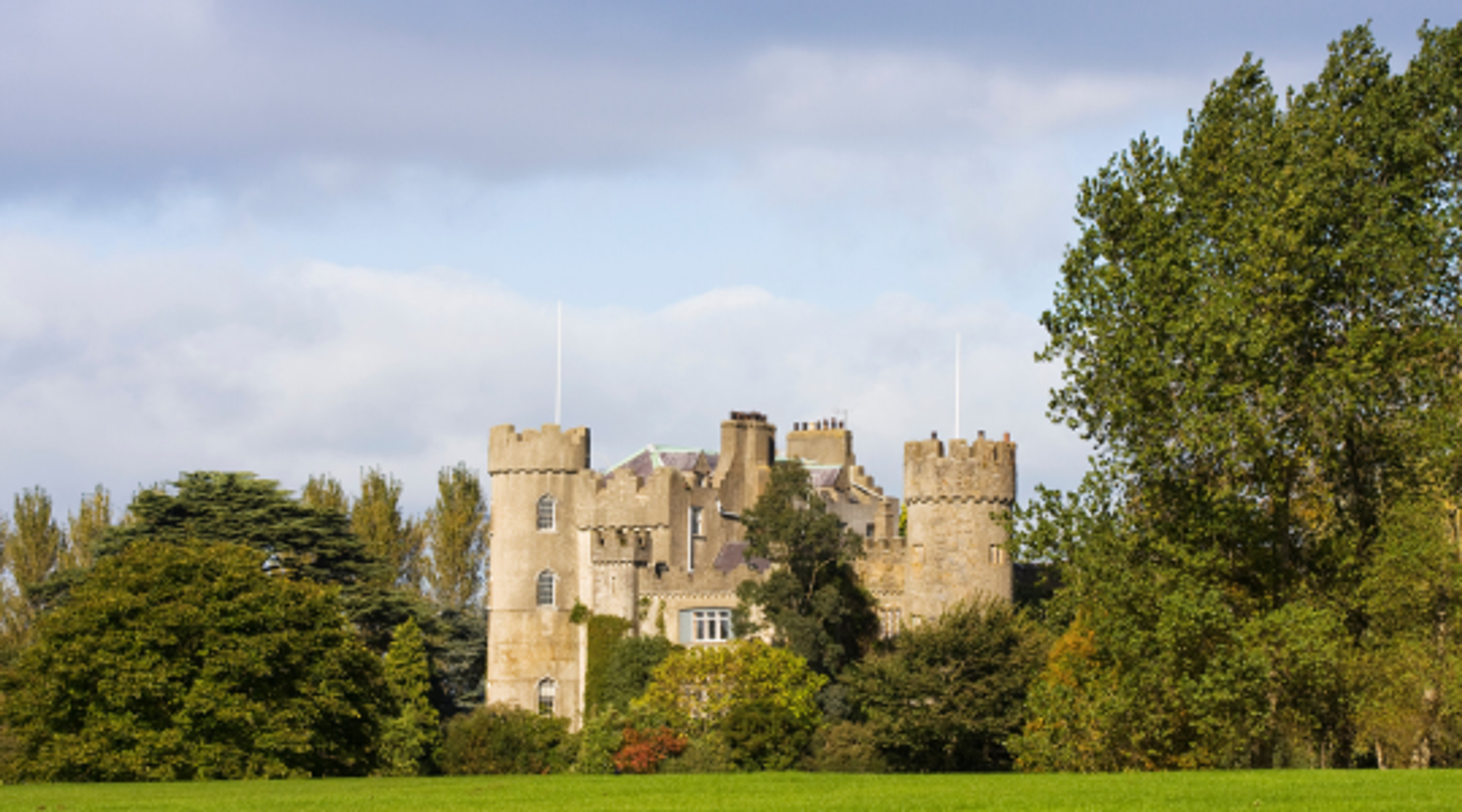
Twenty minutes away from Dublin’s city centre in a quaint coastal village is Malahide Castle. This 12th century castle has witnessed nearly 800 years of history and, of course, many ghostly tales. Malahide Castle has its very own resident jester: Puck. The story goes that Puck fell in love with a lady while working in the castle and was tragically stabbed to death for his forbidden love. Nowadays, he’s been seen in the background of visitors’ photos on the castle grounds. You may also meet a mysterious figure known as The White Lady. Find her portrait in the Great Hall but beware; legend has it, she jumps out of the painting and roams the castle corridors at night.
Whether you’re investigating haunted ruins, learning about Ireland’s dark mythology, or simply savouring a Guinness (or two) with a ghost, visiting Dublin is the perfect way to enjoy Halloween at its roots.
Scared of missing out? Attend one of our immersive English courses in Dublin this Autumn for an experience you’ll never forget.

Summer is here, festival season is in full swing, and it’s the perfect time for a well-earned study break.
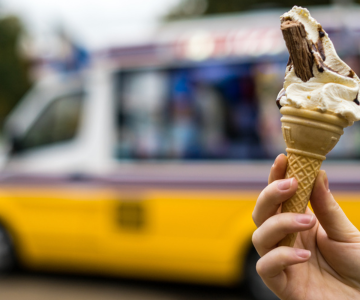
London is heating up, and so is our list of things to do in the capital this month!
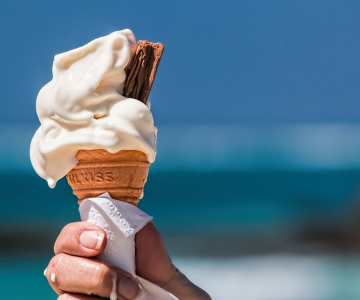
The UK is heating up this week, and the country’s lack of air-conditioning means a lot of sweating indoors under the soft breeze of a floor fan.
We use technology on our website to personalize content, customize and measure advertising, and analyze website traffic. By clicking OK, you agree to the use of these technologies in their entirety.
Learn more in our Privacy Policy.